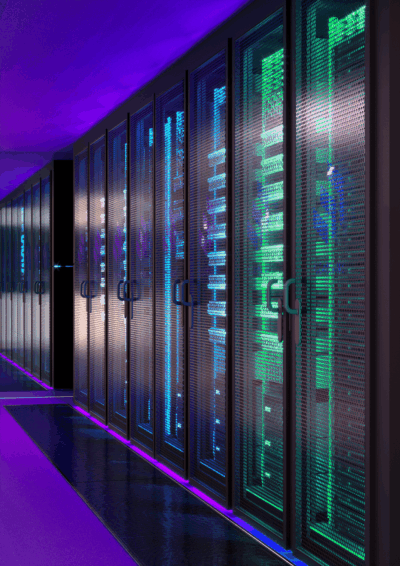Understanding the Security Benefits of SD-WAN
Why SD-WAN Matters More Than Ever
In today’s rapidly evolving digital environment, enterprises require network infrastructures that can keep up with the pace of change. Traditional WAN architectures—while dependable in the past—are increasingly challenged by the demands of cloud applications, remote workforces, and expanding attack surfaces. This is where Software-Defined Wide Area Networking (SD-WAN) has emerged as a transformative solution.
Unlike traditional WANs that rely heavily on expensive, static MPLS connections, SD-WAN uses a software-defined approach to manage and optimize network traffic. Beyond improved performance and agility, SD-WAN also brings significant security enhancements, making it a critical technology for modern IT management.
The Intersection of Performance and Security
SD-WAN was not designed solely for speed—it was built with security in mind. By integrating advanced security capabilities directly into network architecture, SD-WAN provides enterprises with both the agility to adapt to changing business needs and the resilience to withstand evolving cyber threats.
Key security benefits include:
-
End-to-end encryption for data in transit.
-
Segmentation that isolates traffic by application or department, limiting the spread of threats.
-
Integrated cloud security services that protect remote and branch offices without complex hardware setups.
This dual focus on performance and protection makes SD-WAN especially valuable for organizations operating across multiple sites or with distributed teams.
Addressing Security Challenges in Traditional WAN
Traditional WAN infrastructures often suffer from:
-
Limited visibility into network activity.
-
Complex, inconsistent security policies across sites.
-
Inflexibility in adapting to new threats or compliance requirements.
These weaknesses can lead to inconsistent protection and increased vulnerability. SD-WAN solves many of these issues by offering a centralized security policy framework, enabling IT teams to deploy and update protections across the entire network from one location.
Centralized Security Policy Management
One of the most impactful security features of SD-WAN is the ability to manage security policies centrally. This ensures:
-
Uniform security posture across all locations.
-
Faster rollout of security updates and rules.
-
Easier compliance with regulatory requirements.
When threats emerge, IT teams can respond instantly—deploying new protections network-wide without the delays associated with manual updates at each site.
Scalability Without Security Gaps
As businesses grow—adding new offices, cloud environments, or remote endpoints—the complexity of maintaining network security can skyrocket. SD-WAN’s scalability allows organizations to expand without creating new vulnerabilities. Whether integrating new branch offices or adopting new cloud services, SD-WAN keeps security consistent and manageable.
Real-Time Monitoring and Threat Detection
Modern SD-WAN solutions often incorporate real-time traffic monitoring and threat detection. This proactive approach helps identify anomalies—such as unusual traffic spikes or suspicious connection requests—before they can escalate into full-blown incidents.
Why SD-WAN Is a Future-Ready Security Investment
Cybersecurity threats evolve constantly, and static defenses are no longer sufficient. SD-WAN’s flexibility, centralized management, and integrated security controls make it a future-proof investment for organizations looking to strengthen their network defense without sacrificing agility or performance.
By unifying performance optimization with strong security fundamentals, SD-WAN ensures that enterprises can innovate, scale, and compete—without exposing themselves to unnecessary risk.
Building a Stronger Security Posture
SD-WAN represents more than a network upgrade—it’s a security strategy. Its ability to encrypt, segment, monitor, and centrally manage traffic makes it one of the most effective tools for protecting modern enterprise environments.
If your organization is exploring secure, scalable networking solutions, Alvaka can guide you through the considerations and help determine if SD-WAN is right for your infrastructure and business goals.
FAQ
What is SD-WAN and why is it important for modern networking? ▼
SD-WAN, or Software-Defined Wide Area Network, is a networking technology that provides dynamic, manageable, cost-effective, and adaptable WAN connections. It allows companies to route traffic across the internet and cloud-native private networks with greater efficiency. With the vast increase in cloud-based services and remote operations, SD-WAN has become crucial for its ability to bolster network management and agility.
How is SD-WAN different from traditional WAN solutions? ▼
Unlike traditional WAN which often relies on conventional routing hardware and fixed circuits, SD-WAN employs software-defined networking to intelligently direct traffic across the most efficient routes. Moreover, it provides greater flexibility and can leverage multiple types of connections, including broadband and LTE. For businesses, this means improved performance and reduced costs.
What security benefits does SD-WAN offer? ▼
SD-WAN offers integrated security features such as encryption, firewall, intrusion prevention, and the ability to segment the network. These enhancements ensure that data is securely transmitted across the network, reducing the risk of data breaches. Furthermore, SD-WAN allows for quicker compliance with security policies across the network.
Can SD-WAN improve my company’s network efficiency? ▼
Absolutely. SD-WAN optimizes network traffic, directing it along the most efficient paths. This streamlined traffic management results in reduced latency, faster access to applications, and enhanced overall performance. Consequently, SD-WAN not only improves network efficiency but can also boost productivity.
What are the common security challenges with traditional WAN?▼
Traditional WAN often grapples with issues such as complex security configurations, lack of centralized policy management, potential for data breaches, and limited visibility over network traffic. These challenges can lead to vulnerabilities and inefficiencies that impact the security and operation of the network.
How does SD-WAN architecture mitigate common security challenges? ▼
SD-WAN simplifies and streamlines network management, delivering a more cohesive security posture. With integrated security features, centralized policy control, and enhanced visibility across the network, SD-WAN architectures inherently diminish these common security risks, elevating the network’s overall defense mechanisms.
What is centralized security policy management and how does it help? ▼
Centralized security policy management in SD-WAN means that network configurations and security policies are controlled from a single, unified interface. This enables consistent policy enforcement, simplifies administration, and reduces the potential for error. Moreover, it permits swift updates and adjustments to policies as threats evolve, ensuring a more secure environment.
Does SD-WAN’s centralized management compromise performance? ▼
On the contrary, SD-WAN’s centralized management actually bolsters network performance. It provides a streamlined framework for traffic management, enhances responsiveness, and allocates bandwidth more effectively. Hence, while bolstering security, performance also sees marked improvement.
Is implementing SD-WAN a complex process? ▼
Implementing SD-WAN is typically less complex than maintaining traditional WAN setups. Given its software-based nature, SD-WAN can be deployed and managed with relative ease and often integrates seamlessly into existing IT environments.
How does adopting SD-WAN affect my business’s bottom line? ▼
Adopting SD-WAN can positively impact your business’s bottom line in several ways. It can reduce operational costs through the use of lower-cost internet links, minimize the time spent on network management, and cut down on the costs associated with traditional telecommunications links. Additionally, the performance and security enhancements can lead to increased productivity and fewer financial losses due to security incidents.








 You want to enter in a fully burdened labor rate for this field. What that means is that you want to take the base hourly rate, plus 25-30% for employer payroll taxes, benefits, vacation/holiday time, etc.
You want to enter in a fully burdened labor rate for this field. What that means is that you want to take the base hourly rate, plus 25-30% for employer payroll taxes, benefits, vacation/holiday time, etc.
 Smoke testing is a type of software testing performed by Alvaka after a software patching sequence to ensure that the system is working correctly and to identify any misconfigurations or conflicts within the patched system.
Smoke testing is a type of software testing performed by Alvaka after a software patching sequence to ensure that the system is working correctly and to identify any misconfigurations or conflicts within the patched system. This is a basic cost calculator for you to compute your typical monthly cost for patching your servers, PCs, laptops, tablets and associated application software. It also forms the basis for you to begin calculating your Return on Investment for software patching, or for comparison with alternatives to the manual process of patching operating systems and application software—such as Patch Management as a Service, also known as Vulnerability Management as a Service.
This is a basic cost calculator for you to compute your typical monthly cost for patching your servers, PCs, laptops, tablets and associated application software. It also forms the basis for you to begin calculating your Return on Investment for software patching, or for comparison with alternatives to the manual process of patching operating systems and application software—such as Patch Management as a Service, also known as Vulnerability Management as a Service. Smoke testing is a term used to describe the testing process for servers after patches are applied.
Smoke testing is a term used to describe the testing process for servers after patches are applied.